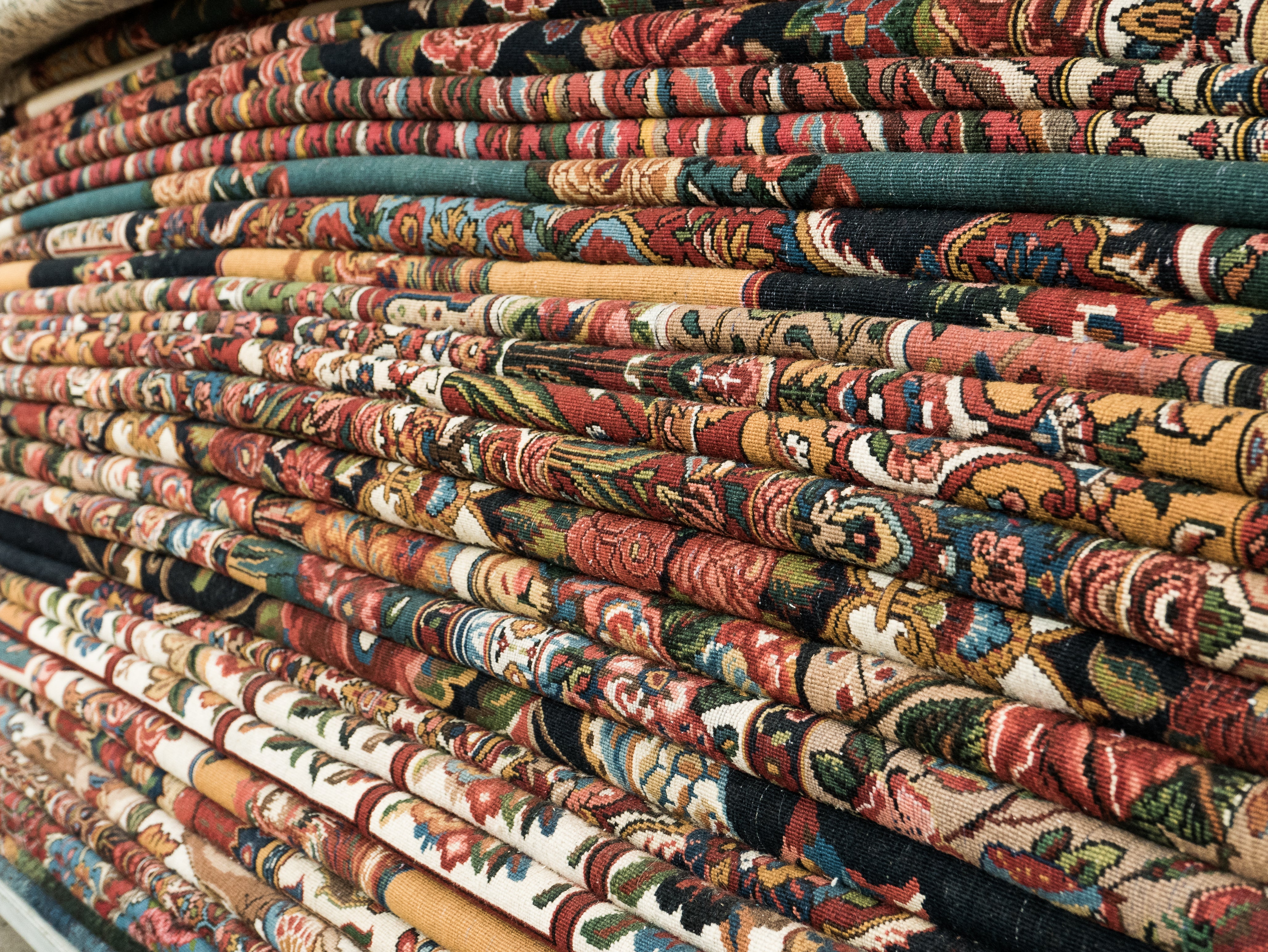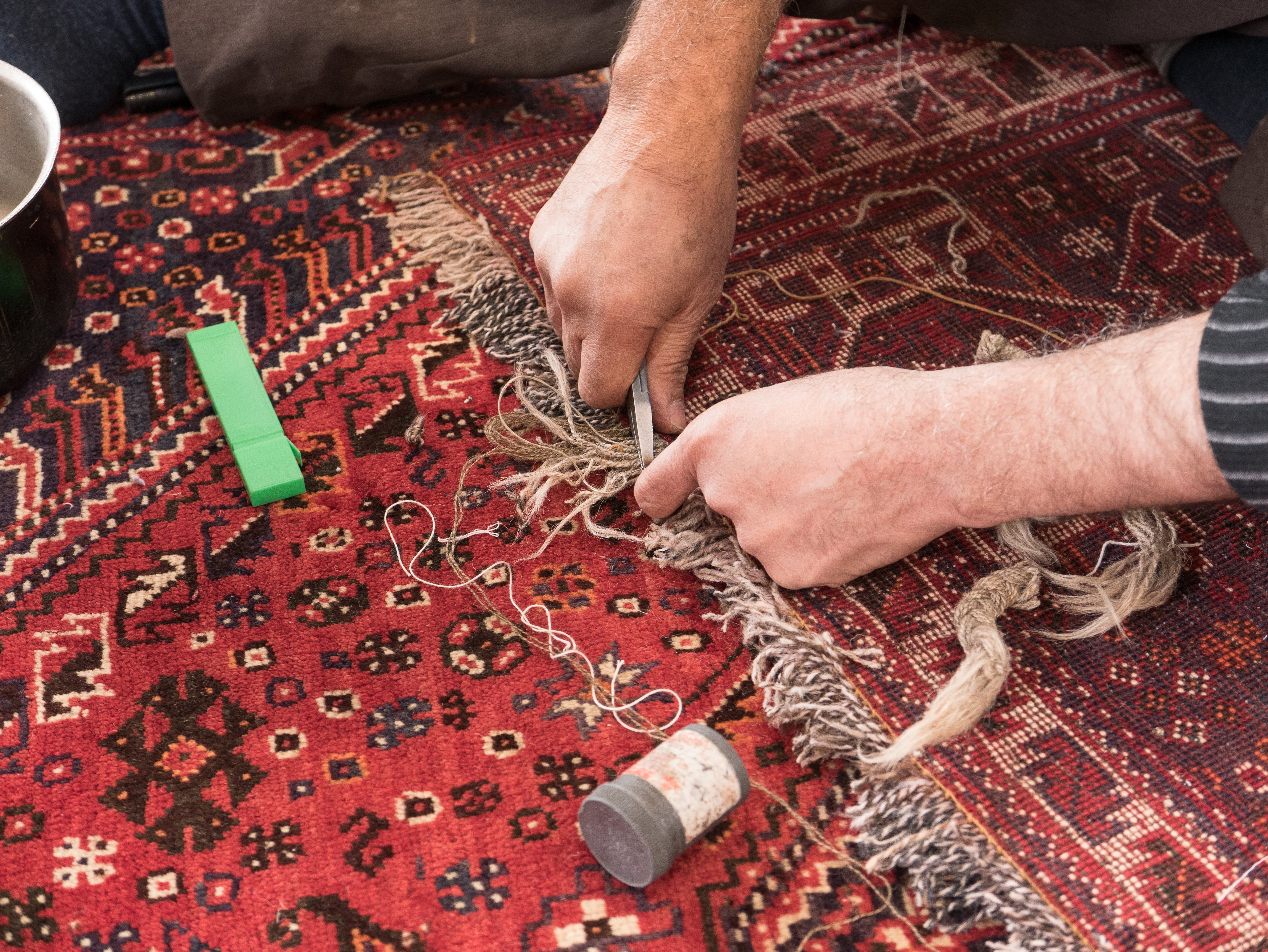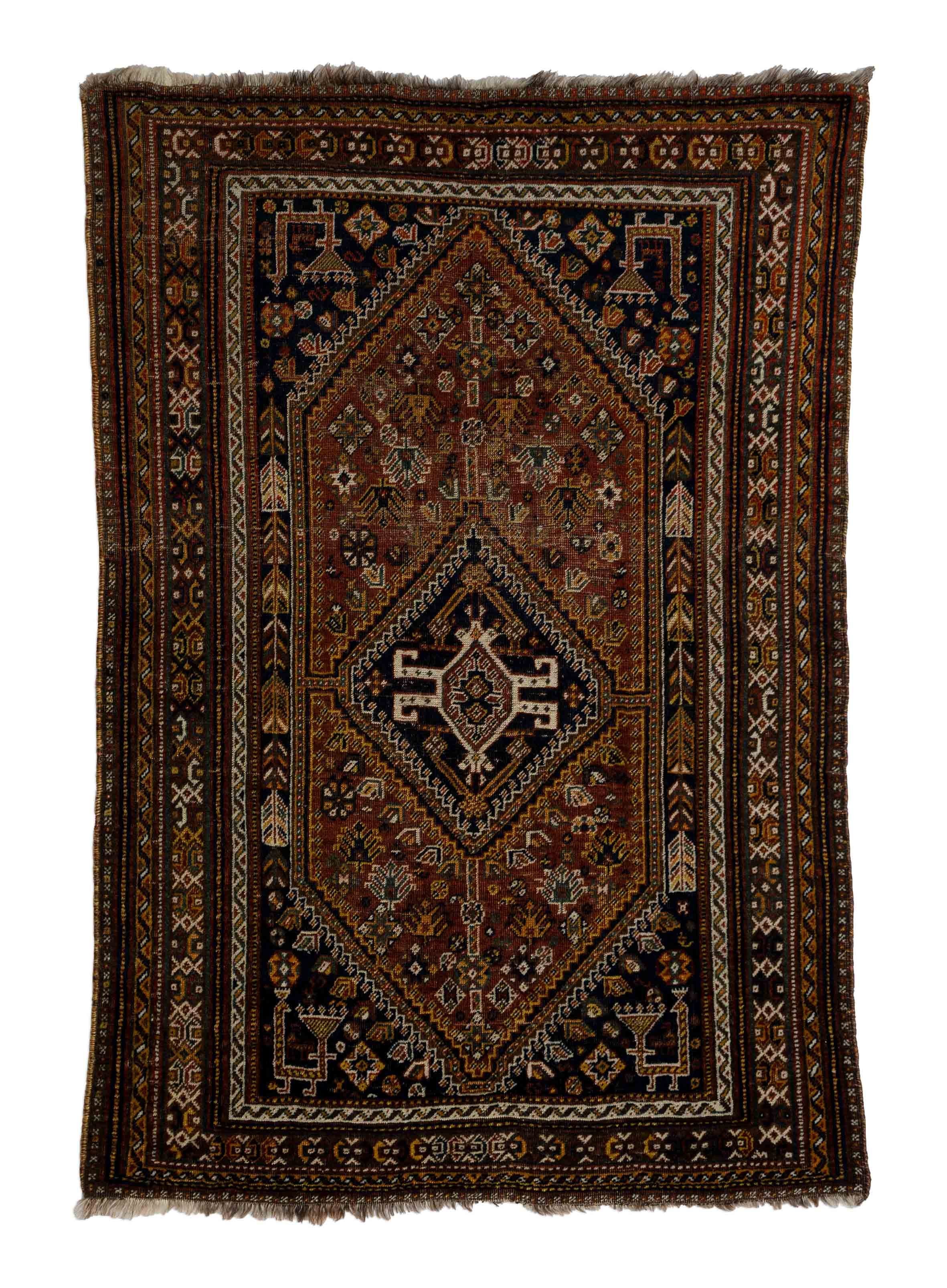
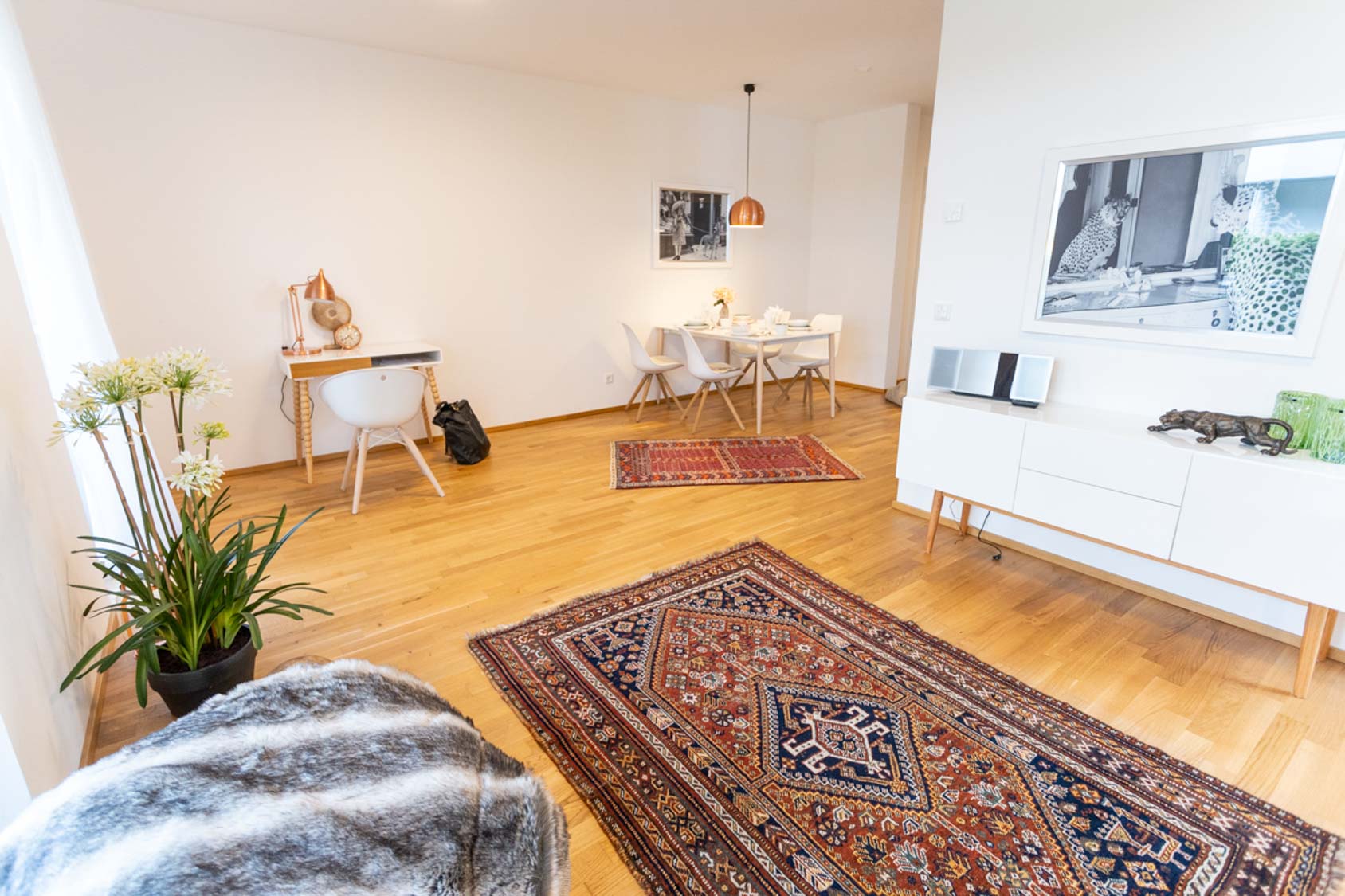
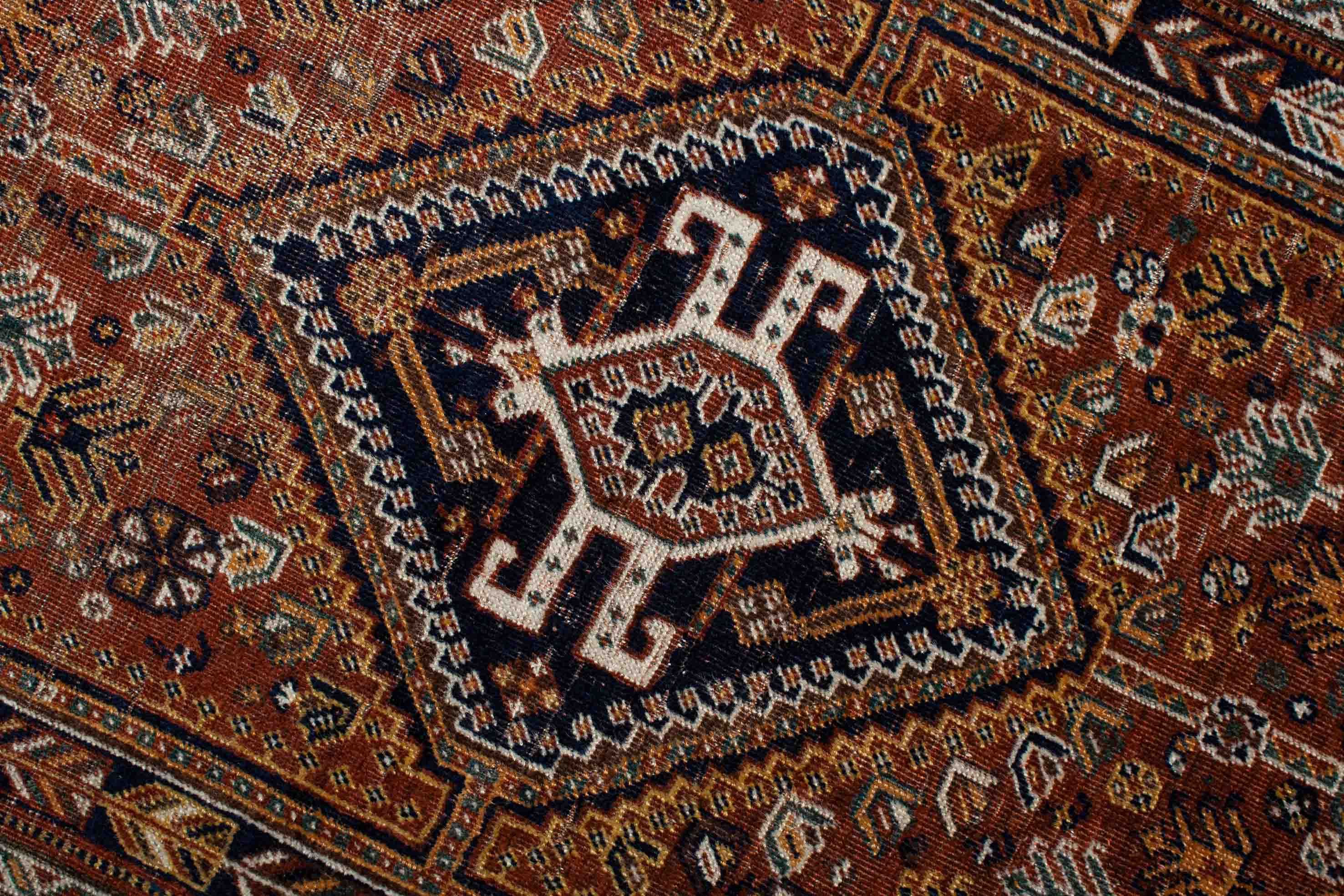

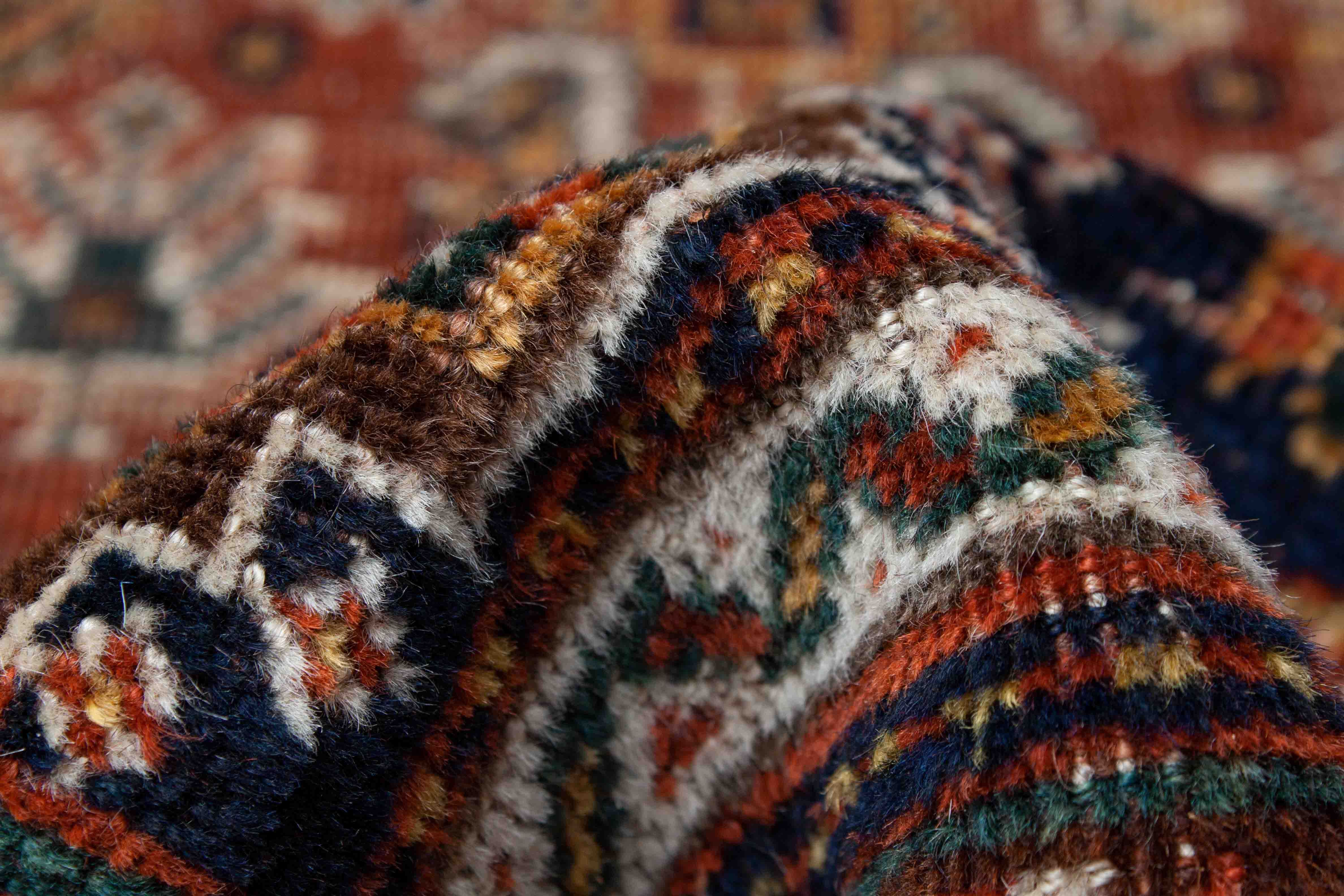
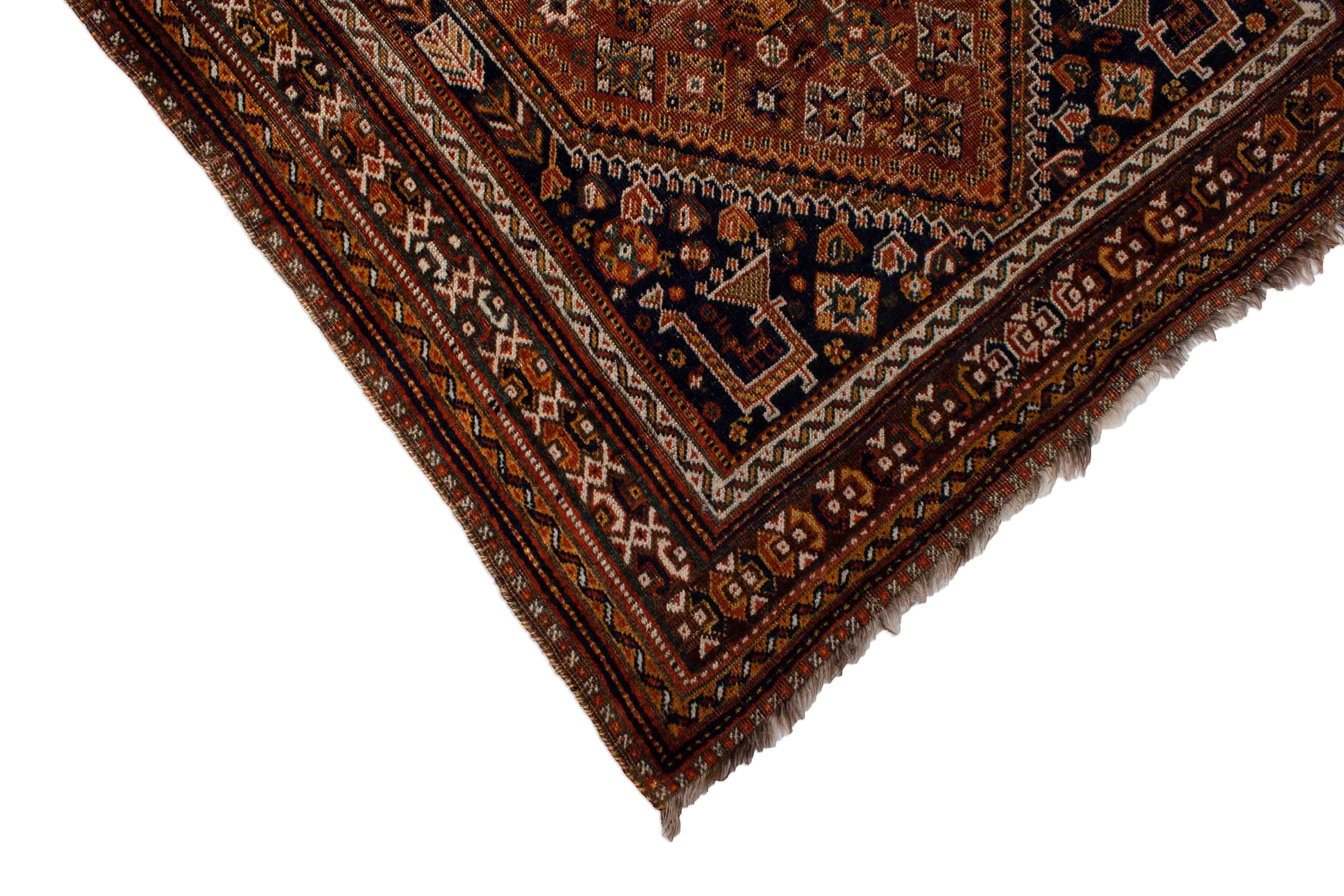
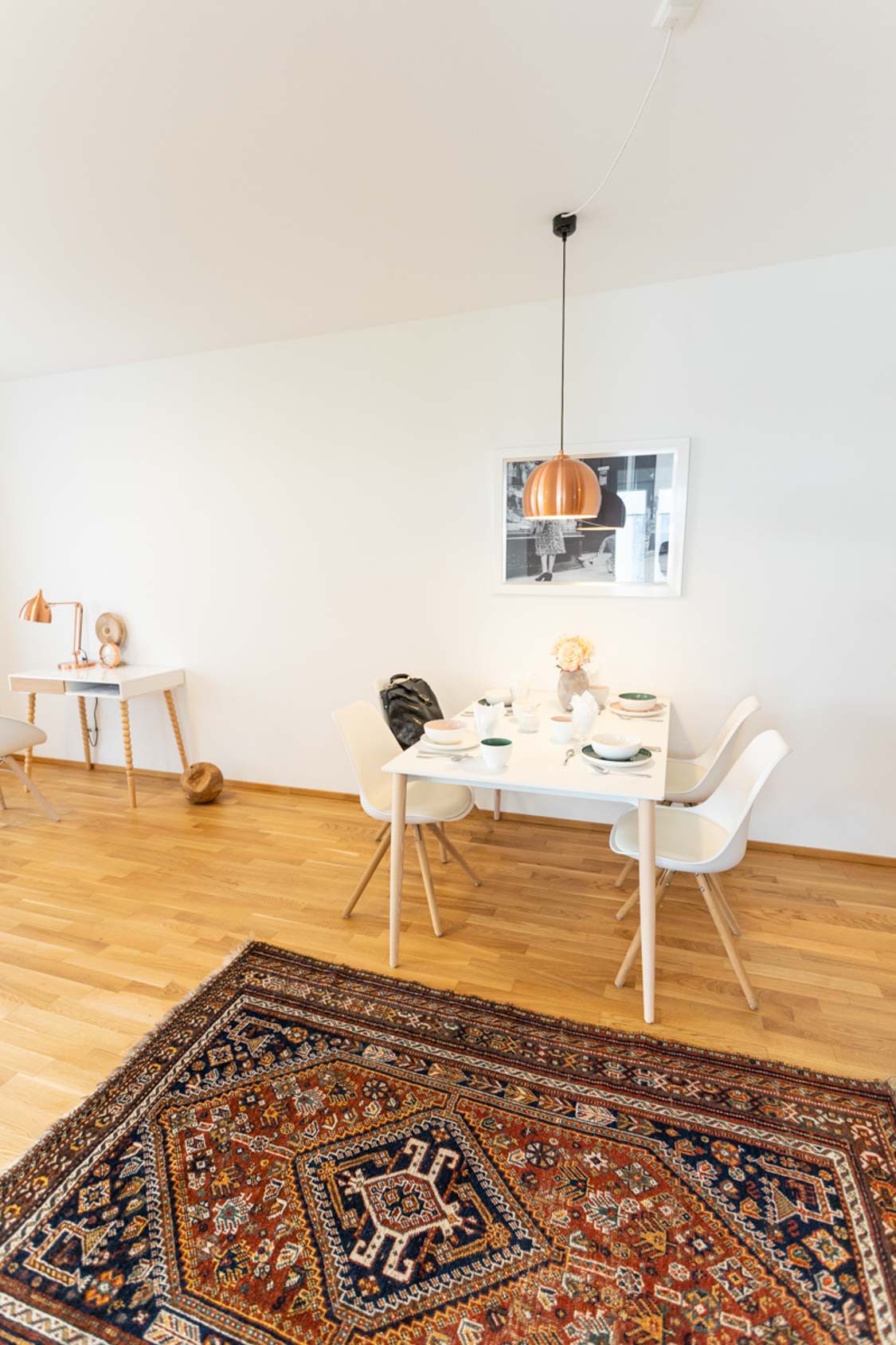
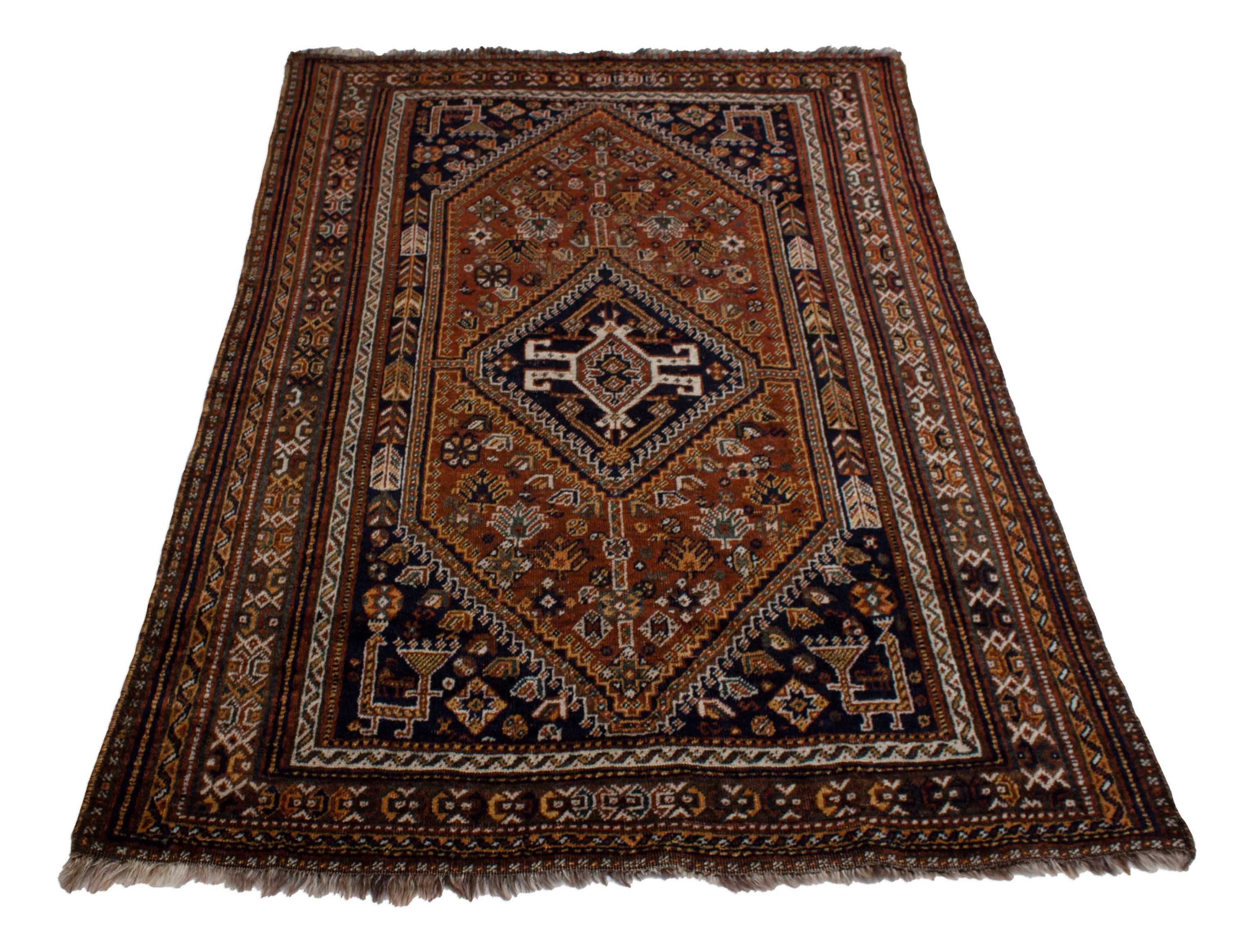
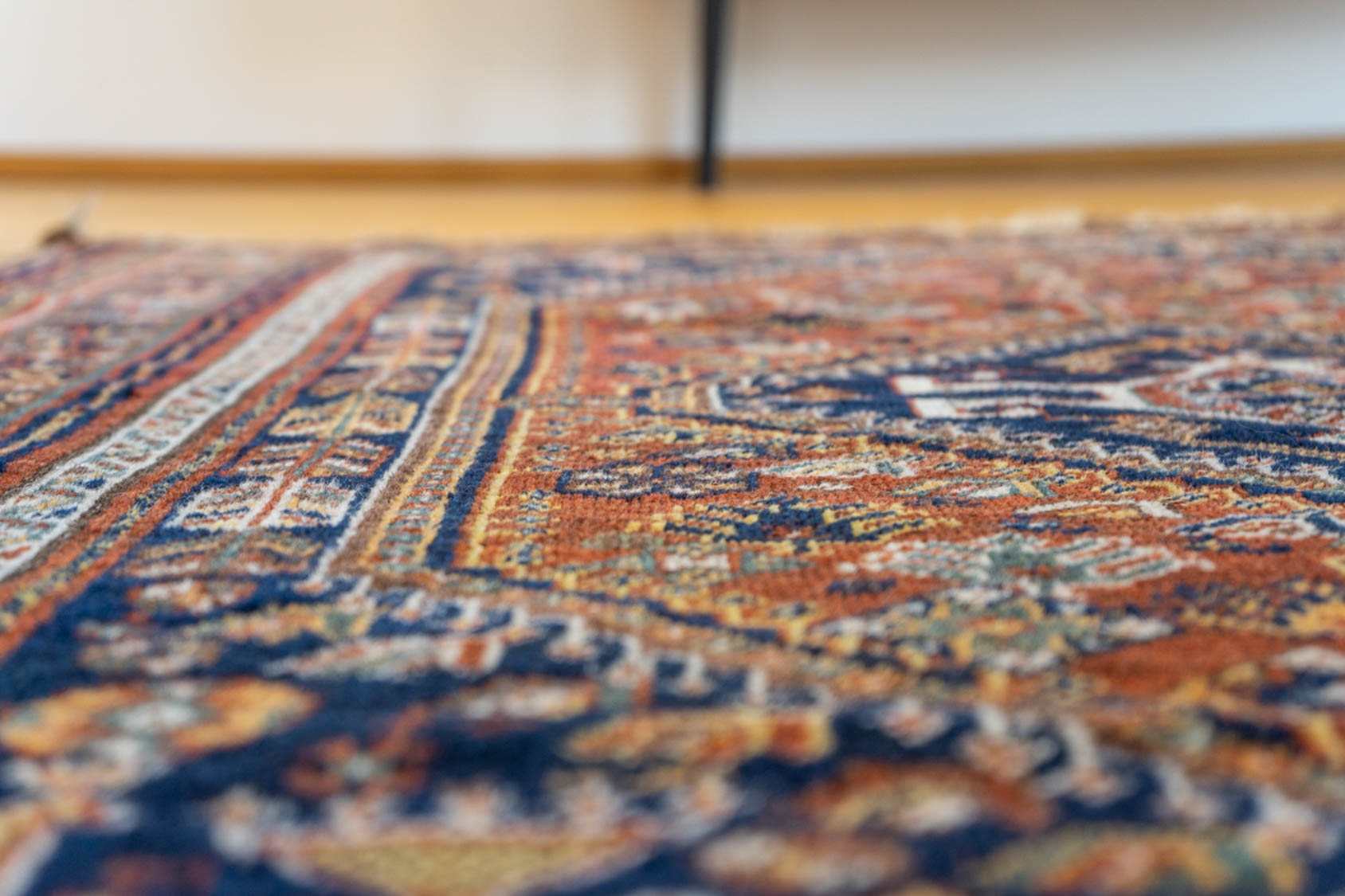
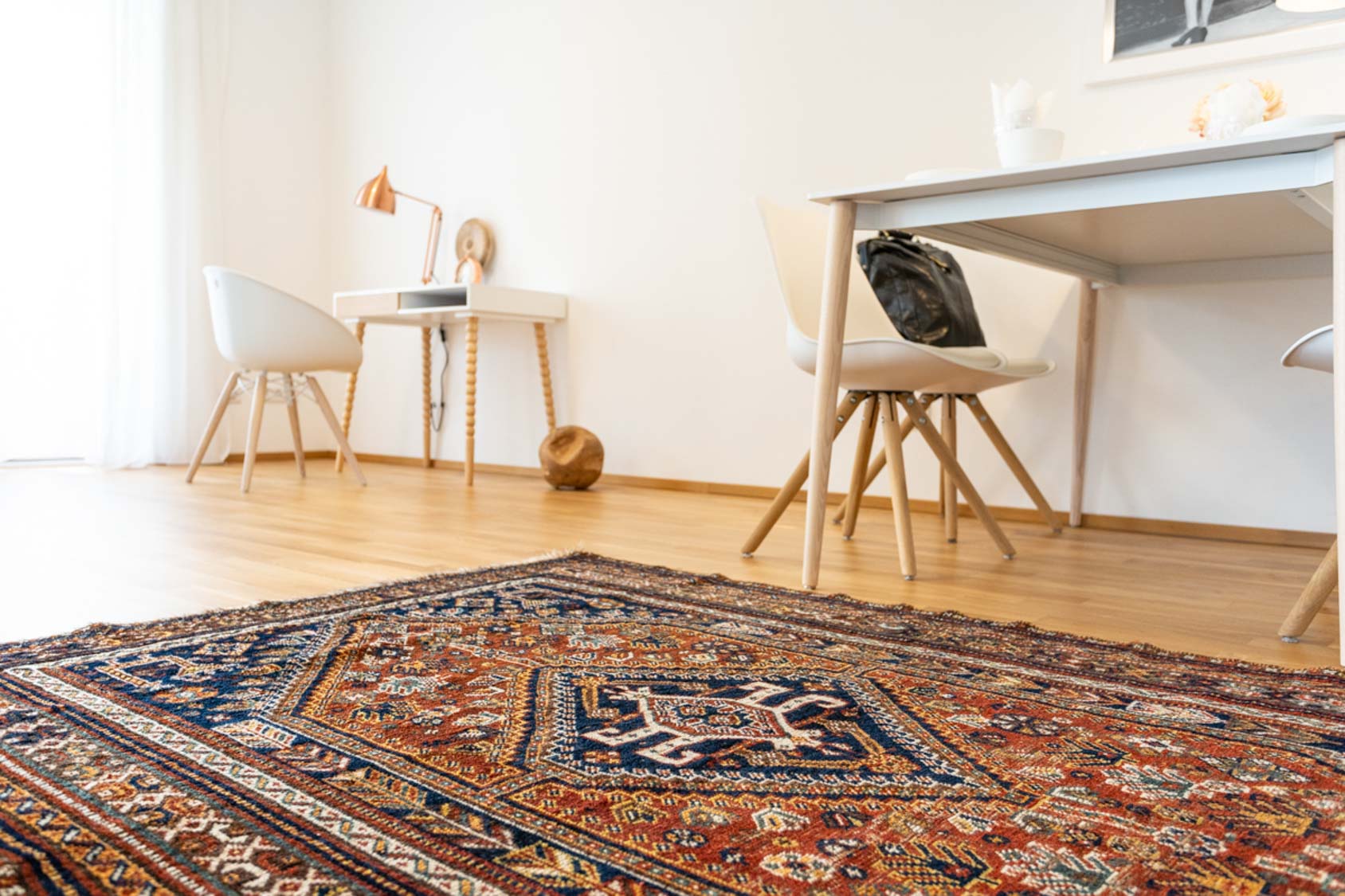
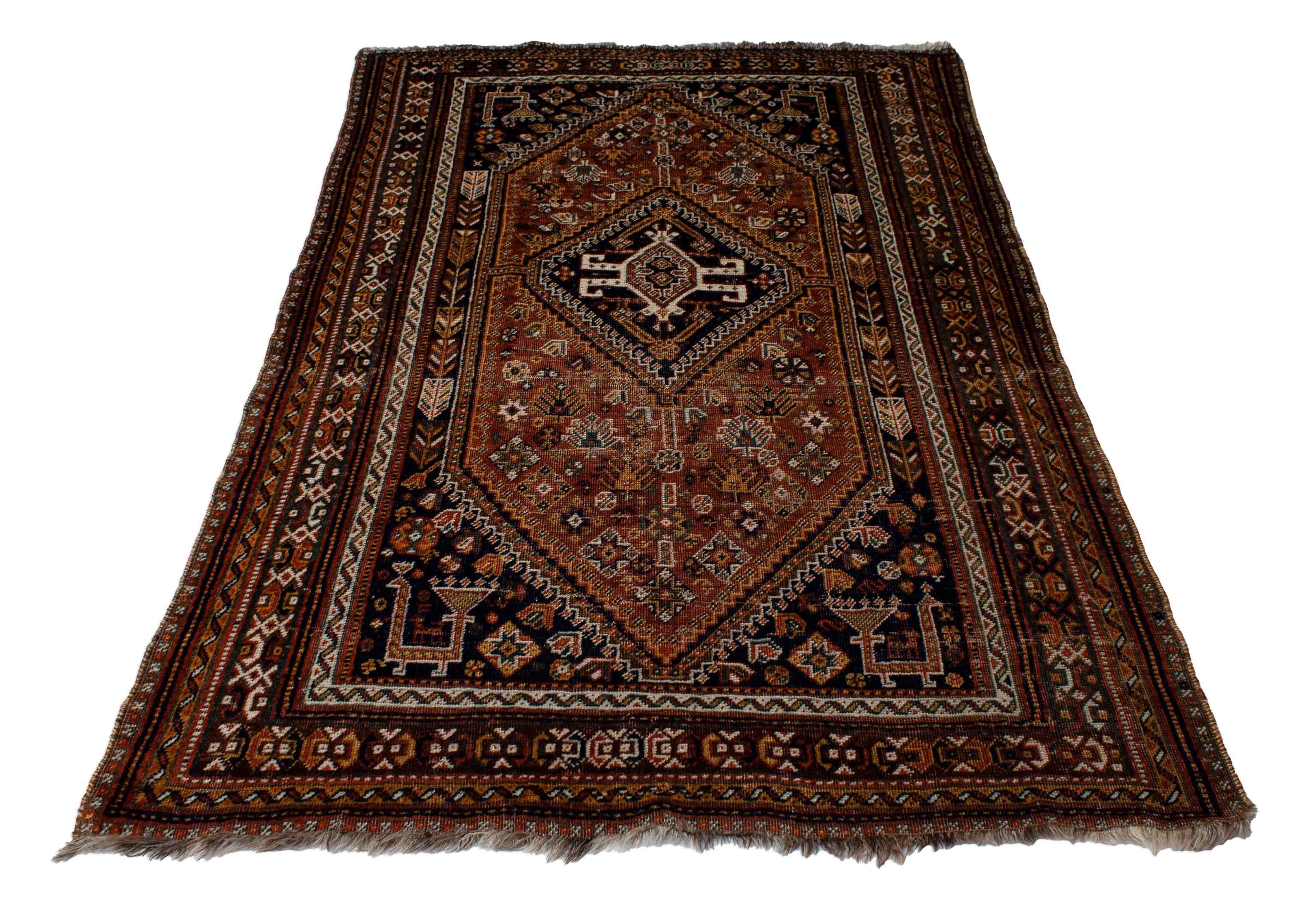
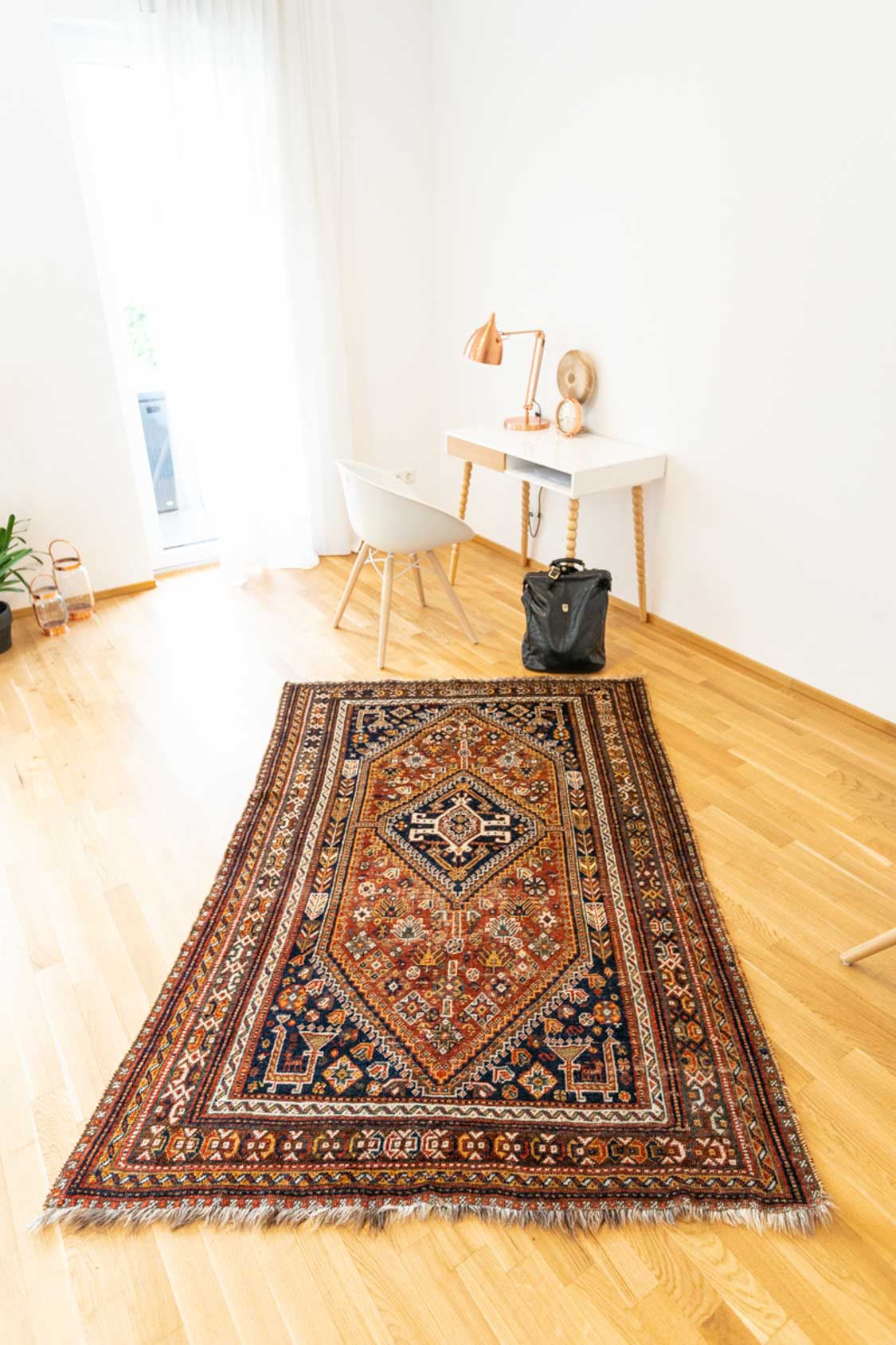
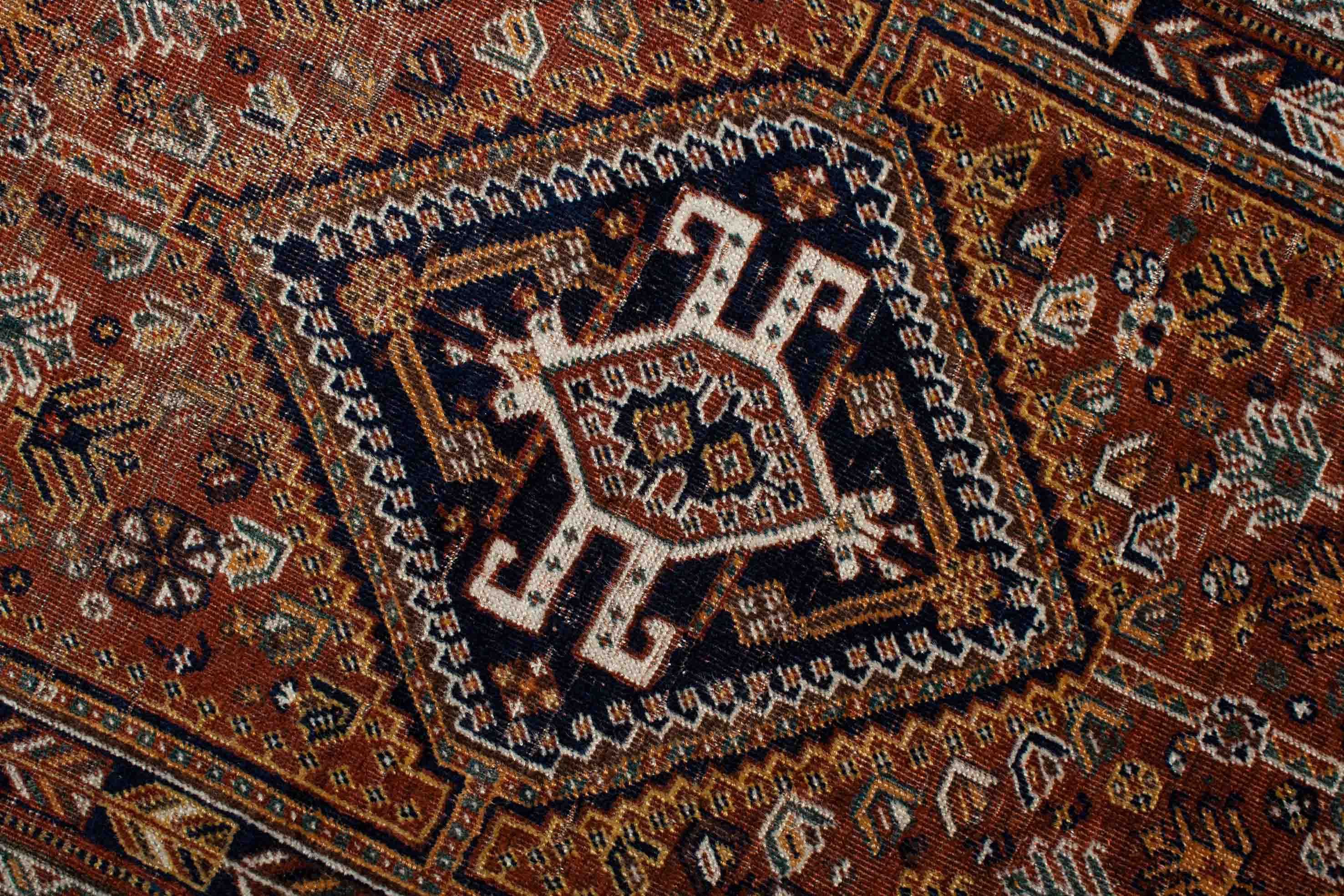
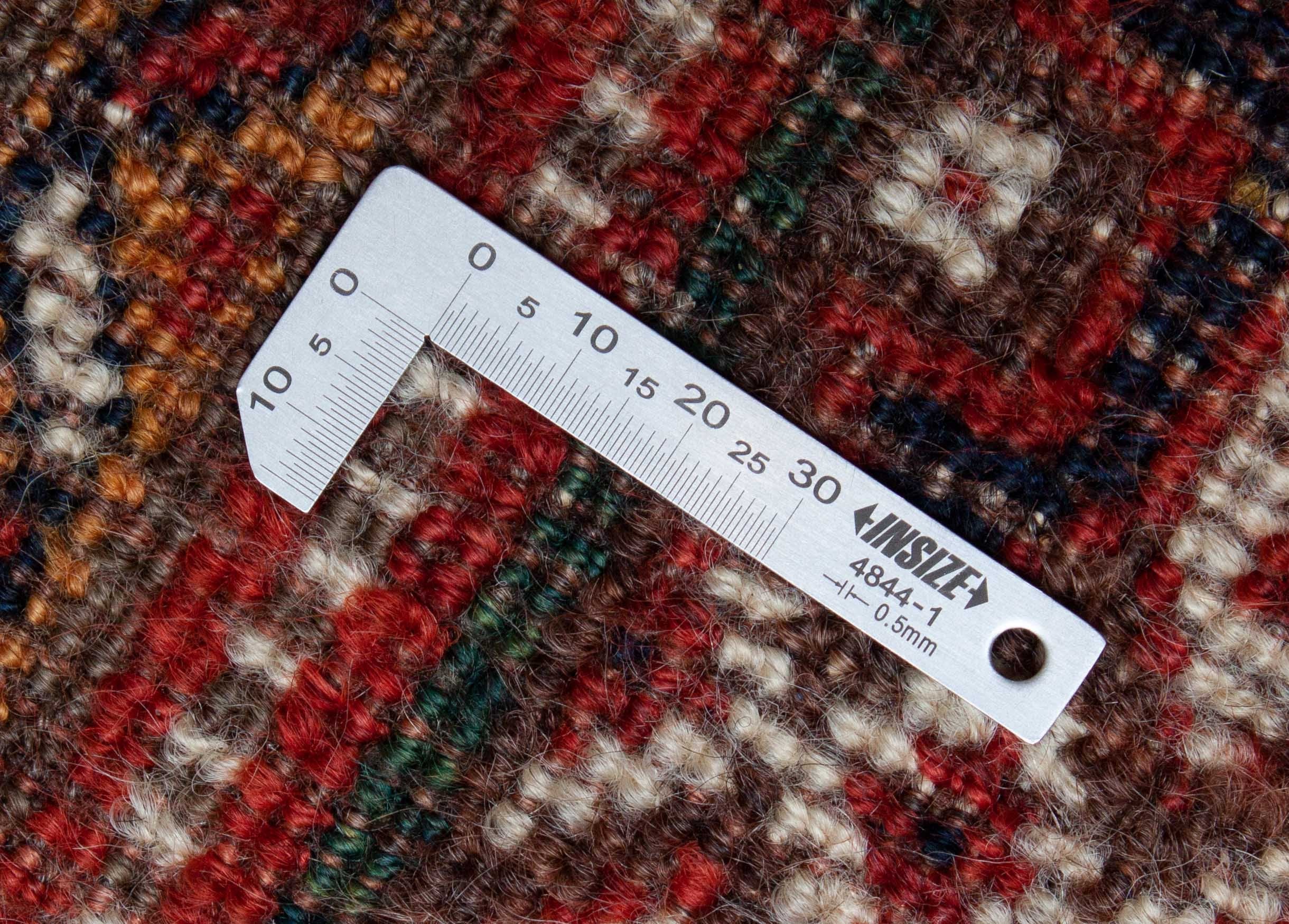
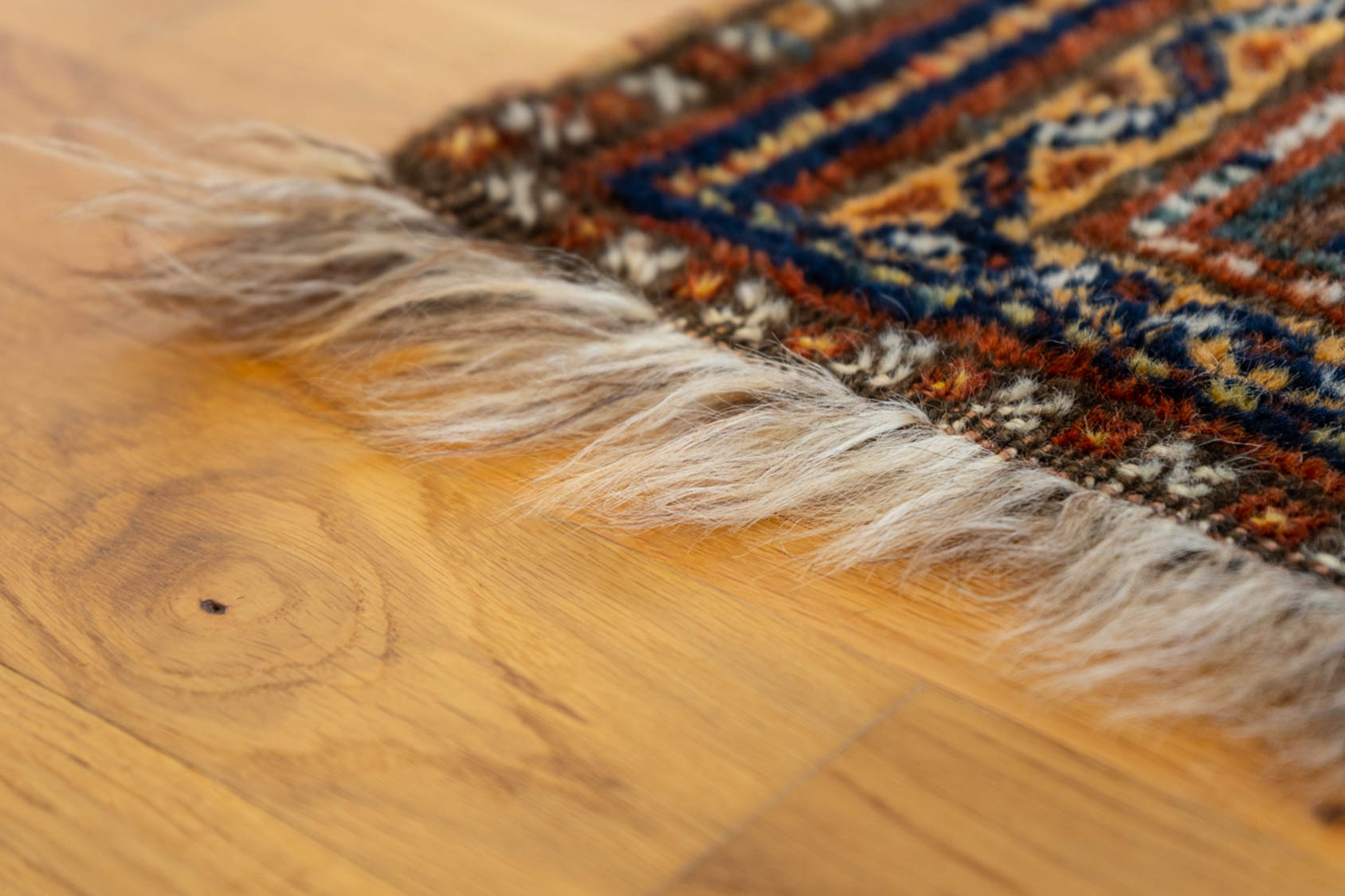
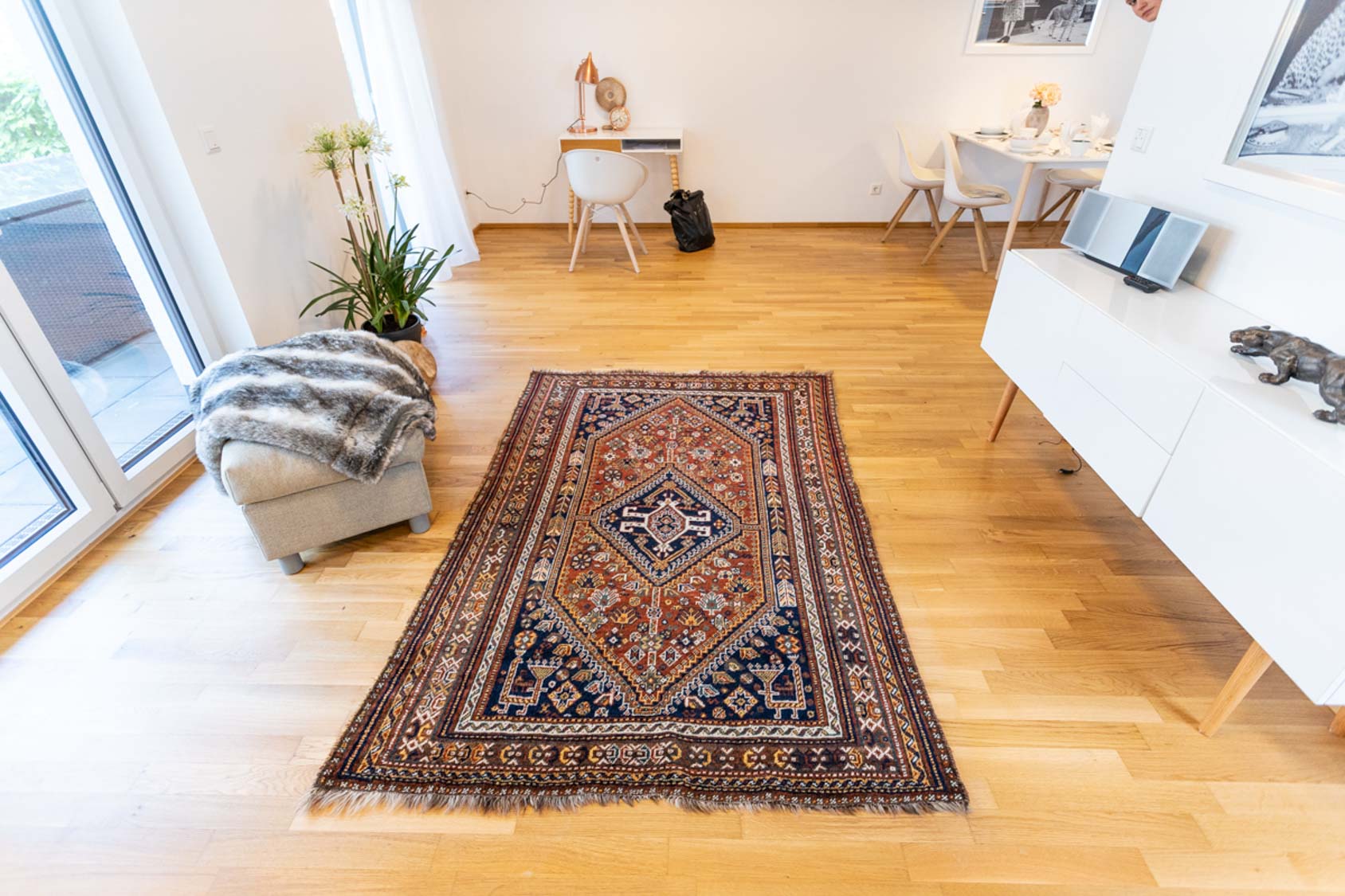
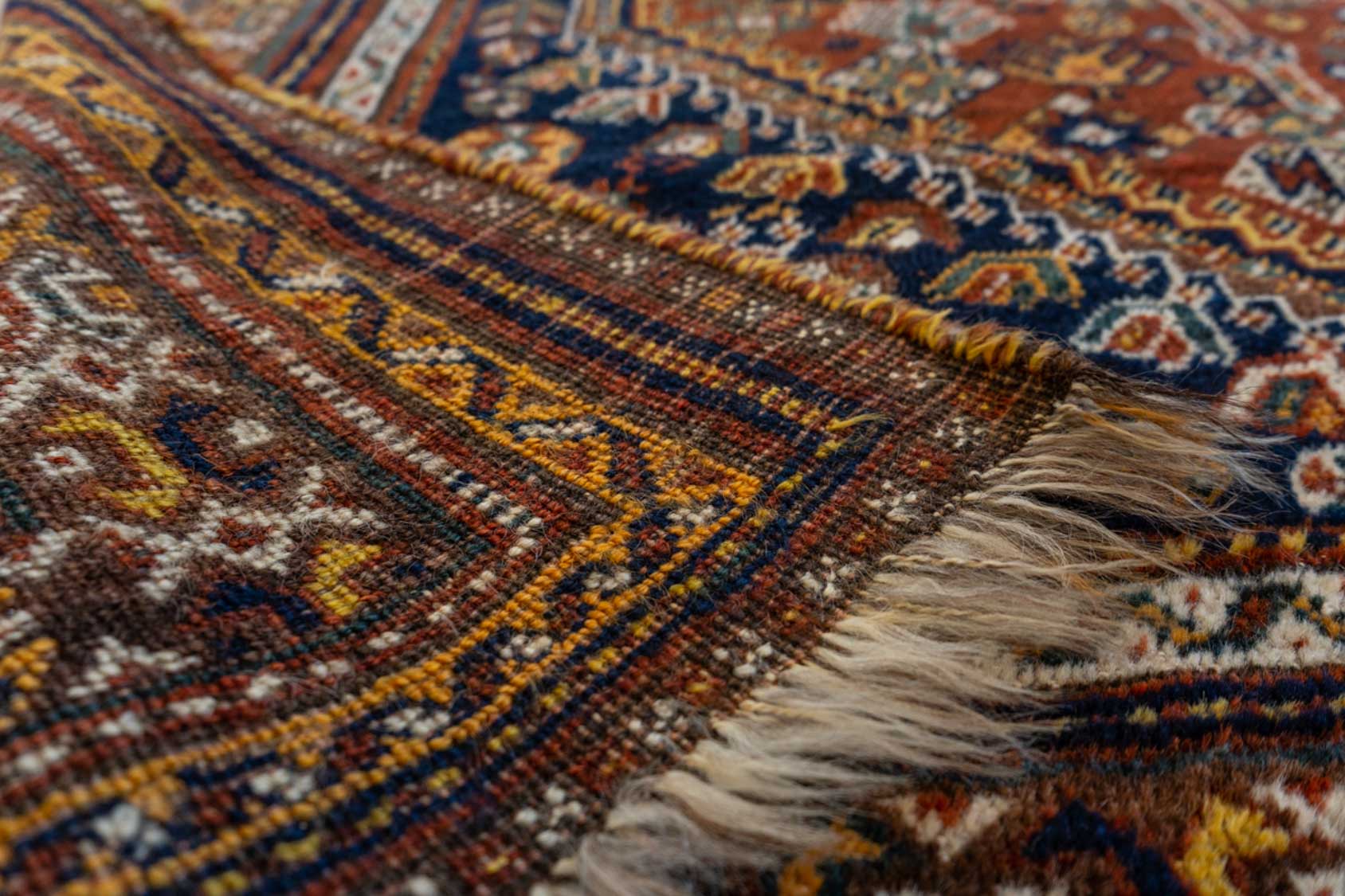
Ghashgai
204 cm x 139 cm
Nr. 19321
Geometric Ghashgai, dark brown with border and Medaillon
| Place of origin | Persien |
| Size | 204 cm x 139 cm (= 2.84 qm) |
| Manufacturing | hand knotted |
| Material | Flor: wool (handspun, natural color)Weft & Warp: wool |
| Knots/m2 | 160.000 |
| Pile height | 7mm |
| Year of manufacture | 1920 |
| Coloring | dark brown, dark blue |
| Edition | Single piece |
Place of origin
The Ghashghai are prominent Persian nomadic people, who have been living in the south of Iran, in the province of Fars for centuries. They consist of a total of seven tribes. The most important tribe of the Ghashghai, at least with respect to rug production, is the Kashghuli (also Kashguli, Qashguli). Old and antique rugs of the Ghashghai are sought-after collector's items today. Ghashghai rugs are known as King among Persian nomadic rugs.
Most Ghashgai rugs are decorated with the so-called geometric Heibathlou design, a diamond-shaped central field with a rather plain medallion repeated in the corners. The inner field is filled with an unusually large number of ornaments. The motifs range from stars, lions, camels, trees and flowers, to boteh or paisley symbols. The motifs are partly stylized and partly realistic. The repeating motifs are never completely identical. They differ considerably in color scheme. The arrangement of symbols is rarely symmetrical. The longitudinal symmetry is often disregarded. Individual elements in the borders also vary in color. Small rows of boxes at the ends of the rugs are typical. The variance in the design is due to the fact that the Ghashgai had no knotting patterns and all rugs were knotted from memory and covered in interesting motifs.
Nowadays, most of the Ghashghai are settled. Because they are now mainly settled-down, the Ghashghai can also produce large-sized rugs. The few clans still living as nomads move up to the summer pastures in the Zagros Mountains twice a year. In autumn, they return to the regions with milder winter in the valley. The Ghashghai have the reputation of being very proud, hard-working and honorable. Even though the Ghashghai appear less wild and warlike today, they still have an influence on the Iranian domestic politics that should not be underestimated.
Patterns
The embellished edging (border) forms a beautiful contrast to the center and creates a transition at the edge of the rug.
In the middle of the central field of this Ghashgai is the symmetrical center, also called medallion. The design of the field is arranged in such a way that it gives the impression that the medallion is floating on the field.
The abstract, geometric composition creates the simple elegance of this Ghashgai. The pattern flatters the design of the room and does not take the attention away from its furniture, decoration and architectural elements. It creates a pleasant atmosphere without dominating the style of the room.
The colors dark brown and dark blue dominate the overall impression. The border is dark brown. The rusty red center combines the colors dark blue and off white.
Condition
This Ghashgai has had admirers before you. It was hand knotted about 1920. It has been thoroughly cleaned and only partially restored condition but is in good condition. We have not completely restored this Ghashgai because we think it is as it is a special charm. If you would like, we will of course restore the rug further for you. We can restore almost any rug to an almost perfect condition.
Material
The technique used to produce the materials of the pile of this Ghashgai is over 200 years old. The wool is dyed with natural colors and spun by hand. Dyeing with natural or vegetable dyes is more complicated, expensive and time-consuming than dyeing with chemical dyes. For a bright red, for example, you would need about one kilogram of ground madder root per kilogram of wool as dye. For a strong, not too pale yellow, you would need two kilograms of the dye madder per kilogram of wool. Also spinning wool is time-consuming and labor-intensive. In addition, fewer and fewer people are able to hand spin wool.
But the effort is worth it: By dyeing with natural dyes, the high-quality wool retains its natural fat content. Wool dyed with natural colors and spun by hand creates fascinating, iridescent patterns. The charm of hand-spun wool with its slight irregularities and natural hues unfolds as a contrasting element in modern interiors, but also in rooms that are furnished in a more traditional or country house style. The backing (weft and warp threads) of this Ghashgai is made of virgin wool.
Hinweis zu den Fotos
Kinderarbeit? Nein Danke.
Choose options

















204 cm x 139 cm
Nr. 19321

